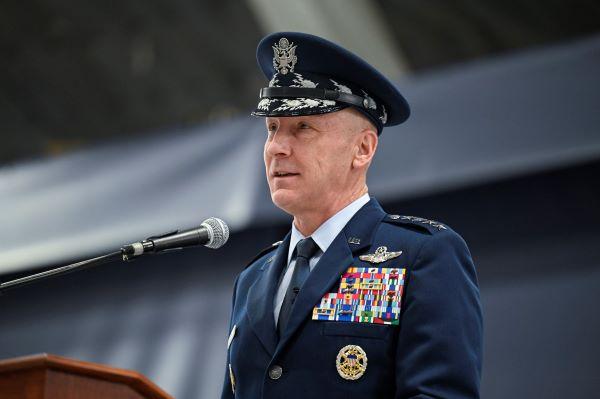
SIMI VALLEY, California—New U.S. Air Force Chief of Staff Gen. David Allvin is taking charge of a service undergoing change in almost all aspects of its force structure: Modernization across the fleet alongside extensive aircraft retirements, an overhaul in how the service plans to deploy its forces and a new look at how personnel will train.
Allvin, who took over as the Air Force’s top officer last month, tells Aviation Week in his first interview in the role that he has one overall goal: Follow through.
“You’re not going to see a new chief of staff that decides we’re going to start something crazy, new and different,” he said at the Reagan National Defense Forum on Dec. 2. “There is change, there will be some tumult, but all is under the umbrella of following through toward a future that’s starting to come a little bit more into focus.”
As part of that focus, Allvin says he wants to align different efforts---aircraft modernization, force structure changes and personnel issues---into a coherent overhaul of the service, since they are all happening at once. Part of that is the need to bring new aircraft into units that are not only ready to start operations but also able to effectively deploy in small coherent units.
“There are a lot of things, there are seeds and kernels that have been disparate,” Allvin says. “I want to bring them together and show that we are really just putting all of these pieces together in a coherent way, because I think our airmen are out there, they’re ready. They’re ready for this.”
Allvin’s tenure comes at a time when the service faces almost constant budget uncertainty under a Congress that lives from one continuing resolution to another. Allvin says his role is to advocate for more money and manpower to accelerate modernization. However there needs to be realism in that goal.
Budget and personnel limitations mean accepting risk as modernization continues---retiring aircraft that still work, for example. This has long proven difficult in Congress, as evidenced by a saga over the past 10 years in trying to cut the A-10 Thunderbolt II attack jet and now a push to retire 30 non-combat-capable F-22 Raptors.
Those F-22s will be retired as the service is ramping up its Next Generation Air Dominance (NGAD) platform. The service is also starting two new programs to look at future mobility---the Next Generation Aerial Refueling System (NGAS) and Next Generation Airlift (NGAL). The Air Force needs to focus on these programs more as the mission, as opposed to a specific platform, to better understand how to effectively fight against new threats.
The service plans to award an engineering and manufacturing development contract for NGAD in 2024, as early work starts on the other two programs.
“The type of air mobility support that we have right now doesn’t have the survivability, that’s why we’re looking at some of these pieces,” says Allvin, himself a tanker pilot along with a career that includes serving as a test pilot. “At the end of the day, we don’t know where we’re going to end up with NGAS and NGAL and all of those, but holistically we need to look at the capability rather than just how’s our rapid global mobility portfolio looking like versus how’s our air superiority portfolio looking like.”
For the near-term, Allvin says his personal goals are focused on enacting the changes already underway, including the new force design, changing organizational constructs for deployments, bringing on new high-tech training capabilities and having an Air Force culture “that starts to bring in a greater sense of purpose and understanding that we are living in a consequential time.”


